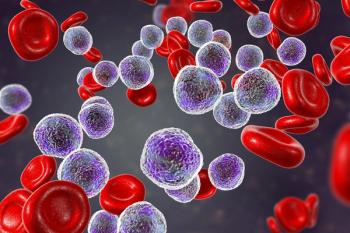
- Oncology Vol 28 No 1S
- Volume 28
- Issue 1S
(P023) The Importance of Surgery and the Role of Radiation Therapy and Chemotherapy for Treatment of Oral Tongue Cancer
Oral tongue cancers have been classically managed with upfront surgical resection, whereas radiation therapy (RT) and chemotherapy (CT) have been generally reserved in the adjuvant setting for patients who possess high-risk features and those with unresectable disease. We wanted to determine the role of RT, surgery, and CT for patients with oral tongue cancer.
Veeral B. Patel, MD, Kavitha Mannava, BS, Margaret Formica, PhD, Michael Lacombe, MD, Jack Hsu, MD, Ajeet Gajra, MD, Seung S. Hahn, MD; Department of Radiation Oncology, Department of Public Health and Epidemiology, Department of Otolaryngology, Department of Medicine, Upstate Medical University
Background: Oral tongue cancers have been classically managed with upfront surgical resection, whereas radiation therapy (RT) and chemotherapy (CT) have been generally reserved in the adjuvant setting for patients who possess high-risk features and those with unresectable disease. Although surgical resection is a vital component for management of oral tongue cancer, CT and RT have been shown to be beneficial in both early-stage patients with high-risk features and those with locally advanced disease as well. We wanted to determine the role of RT, surgery, and CT for patients with oral tongue cancer.
Materials and Methods: A retrospective chart review of 94 patients was conducted for patients diagnosed with and treated for oral tongue cancer at SUNY Upstate University Hospital between 2001 and 2011. Institutional review board (IRB) approval was obtained prior to initiation of the study. The primary endpoint was overall survival (OS). Secondary endpoints included local relapse (LR) rates at both the primary site and the neck. Early-stage patients were classified as stage I/II, and late-stage patients were classified as stage III/IV. OS and LR were calculated using Kaplan-Meier curves and log-rank testing. Univariate and multivariate proportional hazards regression analyses were conducted to determine prognostic features affecting OS and LR rates. Treatment results were analyzed with respect to surgery, RT, and CT as part of the overall management.
Results: The median follow-up for the entire cohort was 61.1 months. The breakdown for stages was I (n = 31), II (n = 14), III (n = 8), and IV (n = 31); 53% of the patients were early-stage and 47% was late-stage. The 2-year and 5-year OS for the entire cohort was 67.5% and 52.2%, respectively. The median survival for the entire cohort was 61.1 months. Further, 77.8% of the early-stage patients were treated with surgery alone, and 13.3% was treated with surgery/RT, and their survival was 80% and 50%, respectively. For late-stage patients, the OS for those treated with surgery/RT/CT (n = 15), surgery alone (n = 7), and RT/CT (n = 6) was 66.7%, 42.9%, and 16.7%, respectively. Multivariate analysis for OS showed a hazard ratio (HR) of 2.663 (95% confidence interval [CI], 0.91–7.62) for patients who did not have surgery. Alcohol (HR = 2.354; 95% CI, 1.054–5.255), higher grade (HR = 2.779; 95% CI, 1.059–7.294), and higher T-stage (HR = 3.77; 95% CI, 1.622–8.797) were statistically significant for poor prognostic features for OS. The median time to local recurrence to either the primary site or neck for the entire cohort was 7.4 months. Multivariate analysis for local recurrence showed that not having surgery (HR = 8.113; 95% CI, 1.599–41.172) and positive margins after resection (HR = 8.365; 95% CI, 1.682–41.596) conferred a worse prognosis.
Conclusion: Oral tongue cancer is an infrequently encountered malignancy that requires a multidisciplinary approach. Surgery remains the cornerstone for management of these patients. Early-stage patients do well with surgery alone, whereas late-stage patients tend to do better with CT and RT in addition to surgery.
Articles in this issue
Newsletter
Stay up to date on recent advances in the multidisciplinary approach to cancer.

















































































